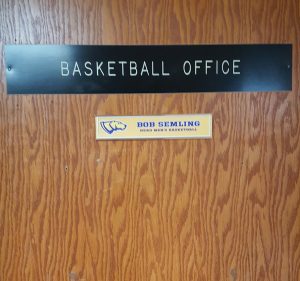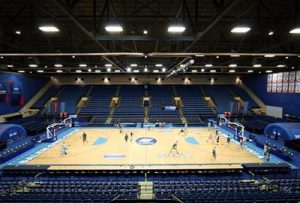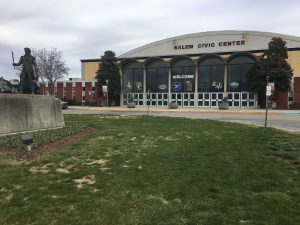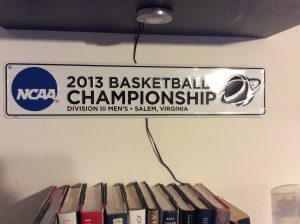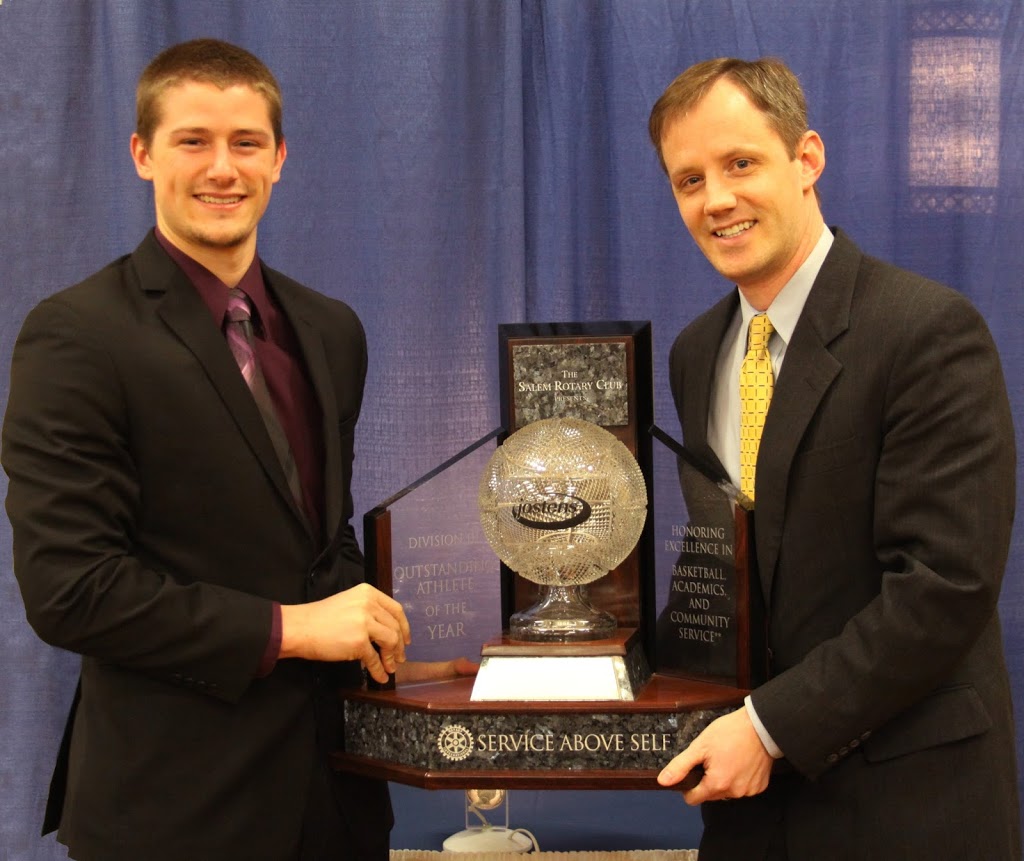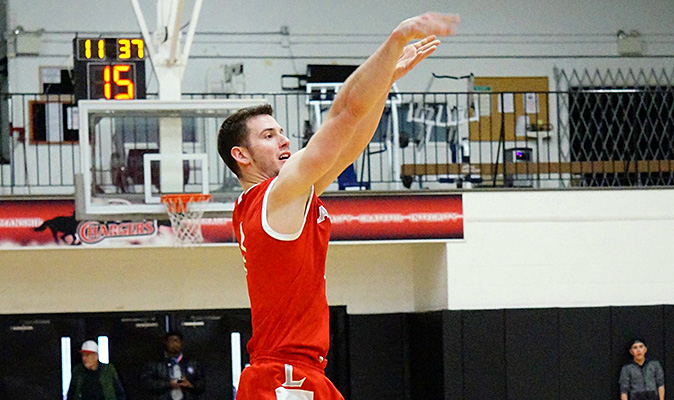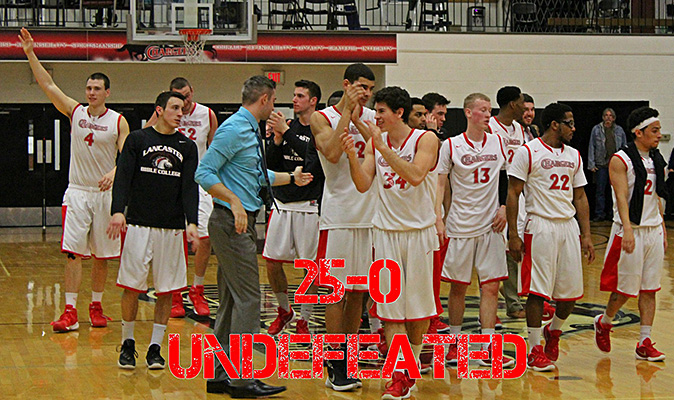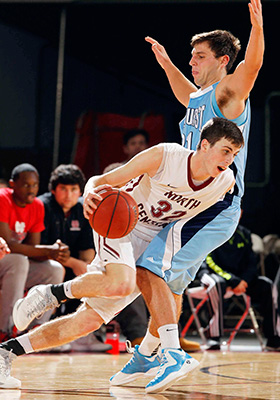
Preseason Top 25 work featured an extensive Excel spreadsheet, at least two notepads, and plenty of erasers.
The 2017-18 Division III basketball season is around the corner. Retirements, new coaches, transfers, new rules, and plenty more await us on November 15 when things officially get underway. I am certainly excited about the upcoming season, but will admit the last two months have flown by. Last I checked, I was putting some things in order while relaxing at my parent’s place in Down East Maine. Suddenly the season is roughly two weeks away and I don’t feel ready. Not sure how the teams feel!
This men’s basketball season promises to carry on the theme of the last few years: parity. Plenty of parity. That said, I felt I had less teams to consider for the Top 25 than I can remember in a long time. Maybe that’s because of parity. So many teams that have been outstanding are just good or pretty good now. There just doesn’t seem to be many outstanding teams. I felt I was saying, “eh, nope, not a Top 25 team on paper right now,” a lot. I said it to a lot of those perennial favorites as well.
I’ll give a spoiler away now. Amherst, Hope, St. Thomas, Whitworth, and Wooster didn’t even make my ballot. Most of them I didn’t consider after looking them over the first time through. That doesn’t mean they aren’t good teams. It is just so much harder to figure out the Top 25 because we now have a handful of really good teams and a ton of good to pretty good teams. Too many to fit on a ballot.
One other thing that surprised me, I voted for three WIAC, three NESCAC, three USAA, and two CCIW teams. Nothing against those quality conferences, but with so much parity I didn’t think 11 of the 25 slots would got to the four power conferences.
I will also admit, the preseason Top 25 sometimes feels like a crap-shoot. I’m damned if I do and damned if I don’t. It is hard to take information on paper about a team, compare it from what you know (or remember) about the team the previous season, and weigh in factors like transfers, new players, and coaching changes. Those last three factors are nearly impossible to actually truly understand. One person’s “great addition” is another’s “let’s see what he can actually do.”
I am not incredibly confident I have read the tea leaves accurately this year. I stared at my notepads and Excel spreadsheet for long periods of time trying to figure out who really deserved to be, say, the 11th ranked team. Which teams was I completely misreading or misinterpreting. Was the loss of an important player going to hurt or maybe help? How much stock was I putting in historic performances and was that even fair to do?
As I’ve had said in many a preseason, at some point I had to just stick with what I had on paper and stop erasing and rewriting (thank goodness, I do these ballots with a pencil). I could erase and rewrite hundreds of times, but I was never going to feel satisfied with my results. There are teams that I could even argue may be too high, too low, should be ranked, should not be ranked.
Personally, I can’t wait to get a few weeks of basketball underway to better understand what I am reading or hearing.
I won’t bore you with any more of my odd-ball thinking. Let’s get to my ballot. I have included at least a brief note or thought about each team, so this will be lengthy. If you enjoy these kinds of things, have at it. If you rather just see who I ranked where and ignore the rest, I won’t take it personally.
First, here is how my ballot finished last season:
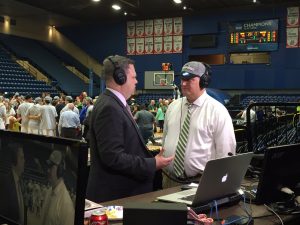
Babson coach Stephen Brennan chatting with me on the Hoopsville Courtside postgame show following the Beavers National Championship victory. (Courtesy: Babson Athletics)
1 – Babson
2 – Whitman
3 – Rochester
4 – Augustana
5 – Middlebury
6 – Marietta
7 – Ramapo
8 – Williams
9 – Hanover
10 – UW-River Falls
11 – Christopher Newport
12 – Hardin-Simmons
13 – Hope
14 – Washington Univ.
15 – Tufts
16 – St. John Fisher
17 – Ohio Wesleyan
18 – Keene State
19 – New Jersey City
20 – Benedictine
21 – Claremont-Mudd-Scripps
22 – Whitworth
23 – Denison
24 – UW-Whitewater
25 – Susquehanna
Now to my ballot for this season’s D3hoops.com Preseason Top 25 (remember, I am just a single voter of 25 total):

Whitman hopes to take trade in their 2017 Sectional Championship trophy for something with a little more gold in in it.
1 – Whitman
This one was about as slam dunk as they get in recent years. After nearly going undefeated for the entire season with the lone loss being to the eventual national champions in the national semifinals in one of the best games I’ve witnessed… someone else had to impress me to knock the Blues off the top perch on my ballot. Especially considering everyone returns!
2 – Augustana
One theme you are going to hear a lot from me is “this feels a bit high.” Augustana came out of nowhere last season and made it to the national championship for the second time in three years, but they felt at least a season early. The Vikings bring back a lot of talent, but also need to fill some holes. I hope I am not expecting too much from Rock Island.
3 – Williams
Four starters return to a squad that also seemed to be a year early. Ephs seem to finally have rebuilt, but they also lost a lot in two players graduating. Expectations are going to be high in Western Mass.
4 – Ramapo
Nothing shakes my head more than the Roadrunners who had a record season last campaign, but once again seemed to hit the glass ceiling. And when they hit that ceiling they tend to hit it hard. Ramapo brings back a ton from last year’s squad including Mr. Everything Tom Bonacum plus a bevy of transfers, but this squad has got to be focused on the bigger picture. I would have ranked them #2 if I had confidence they could break through when it matters most. I also thought about ranking them lower.
5 – North Central (Ill.)
Connor Raridon returns (if you ask some fans, his season-ending injury still affected the team 20 games after the fact) and that means all five starters are back for the Cardinals along with nearly all of the offensive production. It is going to be a battle in the CCIW this season with a lot of good teams (Carthage, IWU among others), so I expect NCC to take some lumps, but they could also turn some heads.
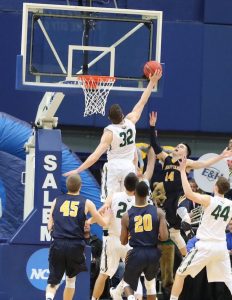
Babson’s national championship came in part to the incredible play, including this championship-winning block, of Joey Flannery.
6 – Babson
When you lose one of the best players to play in Division III to graduation after winning the national championship, the next campaign doesn’t expectations as lofty. I figured I would drop Babson far because I just am not sure you can ever make up for what you lose in Joey Flannery, but once again the Beavers have a wealth of transfers that could keep them atop the NEWMAC, the Northeast, and in the national conversation.
7 – Middlebury
Tough read on the Panthers. Four starters return, but that accounts for only half of their offensive output last season. Losing Matt St. Amour is big; however, it also could make this team come together even more and provide more options and targets. Losing an incredible talent may be the perfect thing to bring it all together.
8 – Hanover
Yeah, I am not sure if this is a bit of a reach or not. The Panthers had a tremendous season last campaign and return four starters, the conference Player of the Year, and nearly 80-percent of their offense. However, will everything ride on Wes McKinney or are their other options to keep Hanover in the conversation? I have more questions than answers and feel I may be putting too much stock in Hanover early.
9 – UW-River Falls
Another team who had a great campaign where I am not sure what to make of the off-season. Lost two starters which accounted for about a third of the team’s points and half the assists. Can UWRF keep the momentum moving forward? Has UWRF permanently changed the conversation atop the WIAC? I think they may have, but the WIAC race will be the toughest it has been in a few years.
10 – Washington Univ.
I haven’t hidden the fact I have not been as impressed with the Bears in recent years. However, it appears what some would call a “rebuilding” or a “retooling” has brought us to this season. The UAA is ripe for the taking and I don’t see why WashU won’t be on top at season’s end. Three starters and 75% of the offense with weapons in all places on the floor. I like how it reads on paper, but want to see how it plays on the court before I move them up higher.

St. John’s sophomore David Stokman looks to continue the rise of the Johnnies in the MIAC.
11 – St. John’s
That is not a typo. The Johnnies showed last year they are ready to dethrone St. Thomas in the MIAC. All five starters return, nearly all the scoring, plus three players in double-figures in the starting five with weapons at guard, forward, and center. I think St. John’s is ready to surprise a lot of people who haven’t been paying attention to anyone but the Tommies in the MIAC.
12 – UW-Whitewater
Is the rebuilding process over? Whitewater has had a few seasons where the team hasn’t been where people are used to them, but it seems that is now in the past. The pieces appear to be there. It feels like Whitewater will make it a thick race atop the conference.
13 – Tufts
What I saw the Jumbos do in the postseason without their center, Tom Palleschi, gives me confidence they will have a strong season this year now that he has graduated. Three starters back including Vincent Pace not to mention a lot of scoring options. I think Tufts is here to stay in the upper echelon of the NESCAC.
14 – Marietta
Here is another team that lost quite a bit, but may surprise. Yes, losing AJ Edwards and others (accounting for over half the points) hurts, but the Pioneers have a transfer from Wooster and Ohio Valley (DII) that seem ready to contribute right away. The start of the season will be very difficult and will prove either I have put too much stock in Marietta or they are going to bounce back nicely.
15 – Rochester
I’ll be blunt: the Yellowjackets lost a lot! I had them in and out of my ballot a dozen times. I still am not sure I should have voted for them, let alone 15th. Sam Borst-Smith, Mack Montague, and Zach Ayers made that offense click and nearly knocked off Whitman in the Elite Eight. They have a lot of talent back and the name recognition helps with recruiting. I’m not sure if this was the right thing to do in the preseason, but the ballot is already in.

Ohio Wesleyan senior guard Nate Axelrod looks to continue the Battling Bishops’ success from the last half of last season.
16 – Ohio Wesleyan
The Battling Bishops have one of the best, if not the best, point guards in Division III basketball. Nate Axelrod had an off-season last campaign maybe because he was the focus of every defense. However, it is his senior campaign and he has some more options around him to take the pressure off. I suspect OWU will quietly surprise some people as they did to close out the second half of last season.
17 – Guilford
Admittedly, the ODAC is down. Randolph-Macon could show that last year wasn’t a fluke with far more experience, but I still think the ODAC campaign goes through North Carolina this season. That said, I do wonder if the Quakers are not a little distracted. Administrative changes have removed the AD title from Tom Palombo who was also in the running to be the next Washington & Lee head coach prior to that title change. Or maybe those distractions and less responsibility will galvanize this unit. I’ll be watching Guilford quite a bit this season.
18 – Christopher Newport
It seems the Captains missed their chance last season losing to Keene State in the NCAA third round. They have only lost five total games the last two seasons, but come in to this season banged up and having lost a lot of leadership from last year. Reports are Marcus Carter won’t be back until the second semester after knee surgery and others will be missing as well. The CAC may be easier to win this time around (Salisbury rebuilding and no other serious threats seemingly on the horizon), but on a national level CNU’s performance may not impress many. This is a wait and see season.

CMS’s Michael Scarlett lives up to the name rather well. He is also a dangerous offensive threat who sets his teammates up well.
19 – Claremont-Mudd-Scripps
It appears CMS has built something for the long run in Southern California. Or at least for consecutive seasons. Michael Scarlett will lead the way with his incredible three-point and free throw shooting along with looking to help others. CMS should roll through the SCIAC and look to finally make a run in March.
20 – UW-Oshkosh
A third team from the WIAC on my ballot… and it isn’t UW-Stevens Point. Oshkosh has been the most consistent in conference the last few seasons, but maybe I am buying too much stock. Three starters and most of their offense is back. As I wrote in my notes, “I like what I see on paper, but…” Not sure what the “but” will produce.
21 – St. John Fisher
Lost their best player in Keegan Ryan and then their coach, Rob Kornaker, announces his resignation (retirement?) shortly before practices begin. Losing those two men alone had me leaning towards not voting for the Cardinals (the pessimistic side of me wondering if Kornaker’s decision to leave was because he knew this campaign wouldn’t be as good despite saying he wanted to see his son play in college). However, I am going with SJF early because they still return four starters and nine players who played more than then minutes a game on average last season. Their assistant coach, who was groomed by Kornaker, takes over. It could still be a good squad in the East.

Adam Gigax and the Emory Eagles hope some time playing in Italy this summer will springboard their upcoming campaign.
22 – Emory
A third team from the UAA in my Top 25. Yeah, I am unsure. This is the area of the ballot where sometimes it might be better to throw darts. The Yellow Jackets should be good. They are one of the most consistent teams in the last six years in the UAA. That said, it seems they haven’t returned to the level we saw from them a few years ago. Another team where I am not sure if I am reading the tea leaves correctly or not.
23 – Skidmore
One of the best players in the East Region and maybe the country returns for the Thoroughbreds who have a lot of talent in a lot of different ways. However, they haven’t been able to put a consistent season together … yet. Maybe I like this team more than I should. Maybe I like and see more in Edvinas Rupkus than I should. I am willing to admit Skidmore has a lot to prove others than it does me and that may mean I have blinders on.
24 – Scranton
The one thing I can absolutely say with certainty about the Royals: they are one of the more consistent programs in Division III men’s basketball. I know they will be at the top of the conference and being considered for Top 25 attention every season. They bring back a lot of weapons, but for the first time in many years I think they are missing a key piece inside (center). How they handle finding the answers down low, so Ethan Danzig doesn’t feel like he has all the pressure on him to produce, will be the key.

Nichols looks to stay a top the CCC and continue to make waves nationally this season. (Courtesy: Nichols Athletics)
25 – Nichols
Here is my wild card. The Bison return nearly everyone from a campaign that turned a lot of heads, including their NCAA tournament appearance (before being crushed by Endicott). Nichols returns four starters and over 80-percent of the points scored from last season including DeAnte Bruton’s 21.3 ppg. However, the Bison have nothing on their schedule that will reveal much about them. Wesleyan, Trinity (Conn.), and Endicott (who lost a lot) are the only games of note. That will make it hard for Nichols to climb my ballot or appear on many others.
Sometimes in the past I have revealed other teams I have on my radar. Other years I have not. I debated long and hard about doing it this year and decided not. Too many people think if I don’t mention a team even on my radar that I am somehow slighting them or the squad when there is absolutely no way I can list every single team I can or did consider in some manner or way.
And with that, this preseason ballot vote is done. Plenty of questions, not a lot of answers, and still two weeks until we see any meaningful basketball played. I look forward to seeing what teams I gauged correctly and which ones I completely missed on. Believe it or not, even when I am wrong I am delighted with the process. Voting in the only Division III men’s basketball ballot is an honor and it allows me to better understand programs, conferences, regions, and much more far better than I could otherwise.
Enjoy the season, folks, and don’t forget to join me on Hoopsville starting Thursday, November 16 – it is out 15th Season Debut! I can’t imagine doing anything else this time of year.

